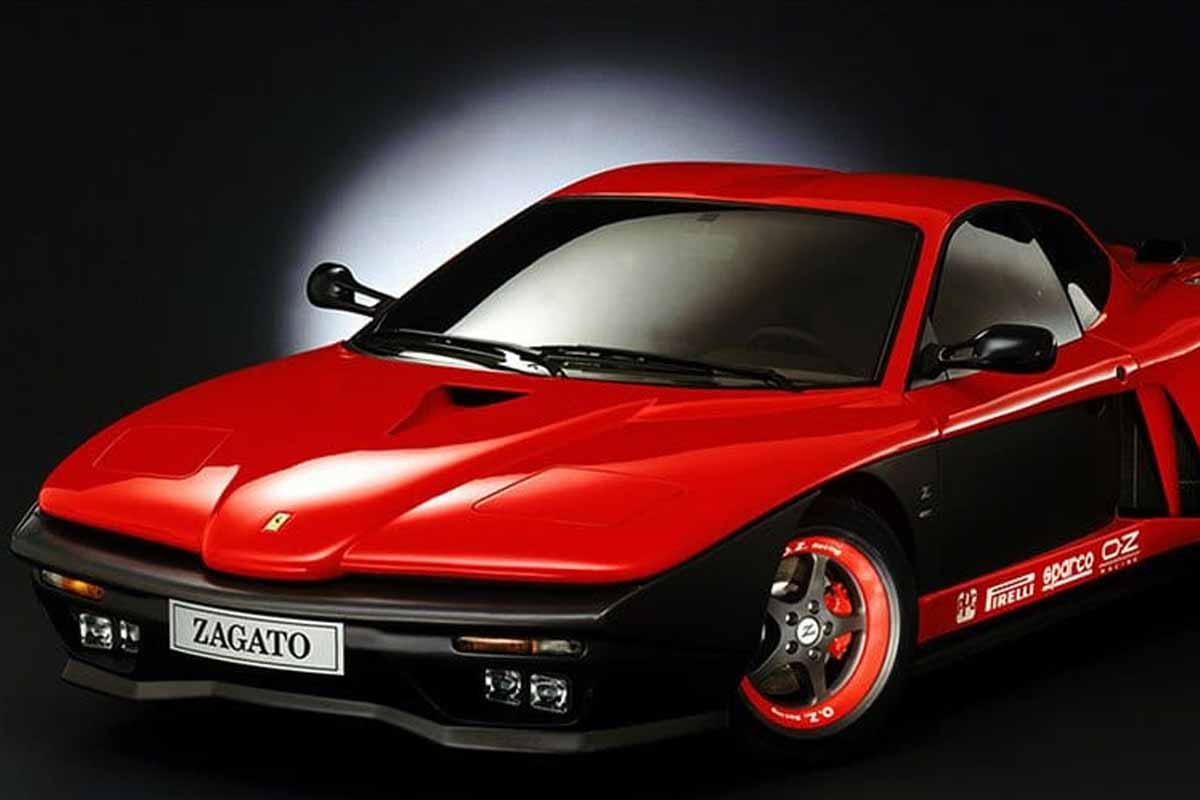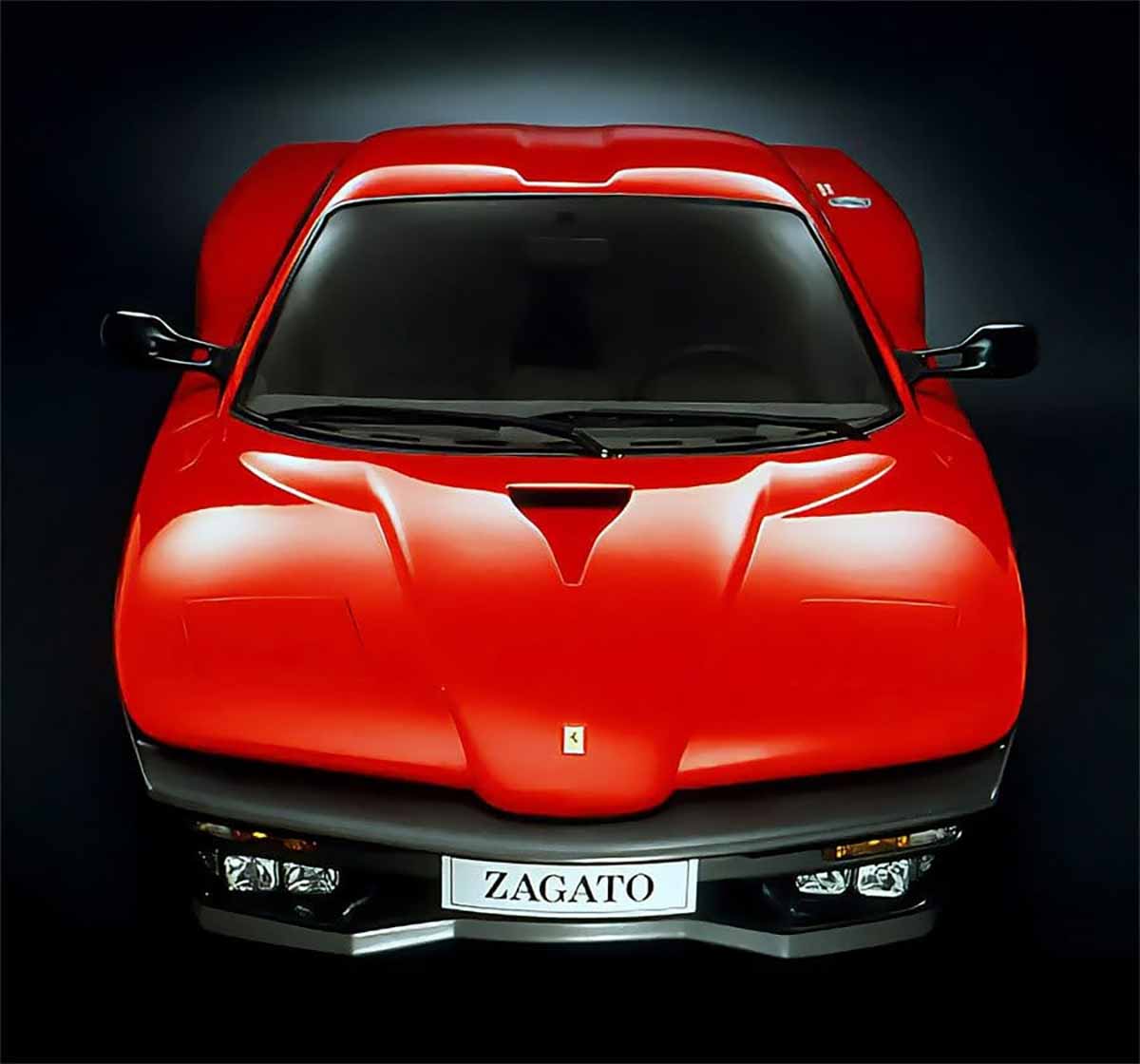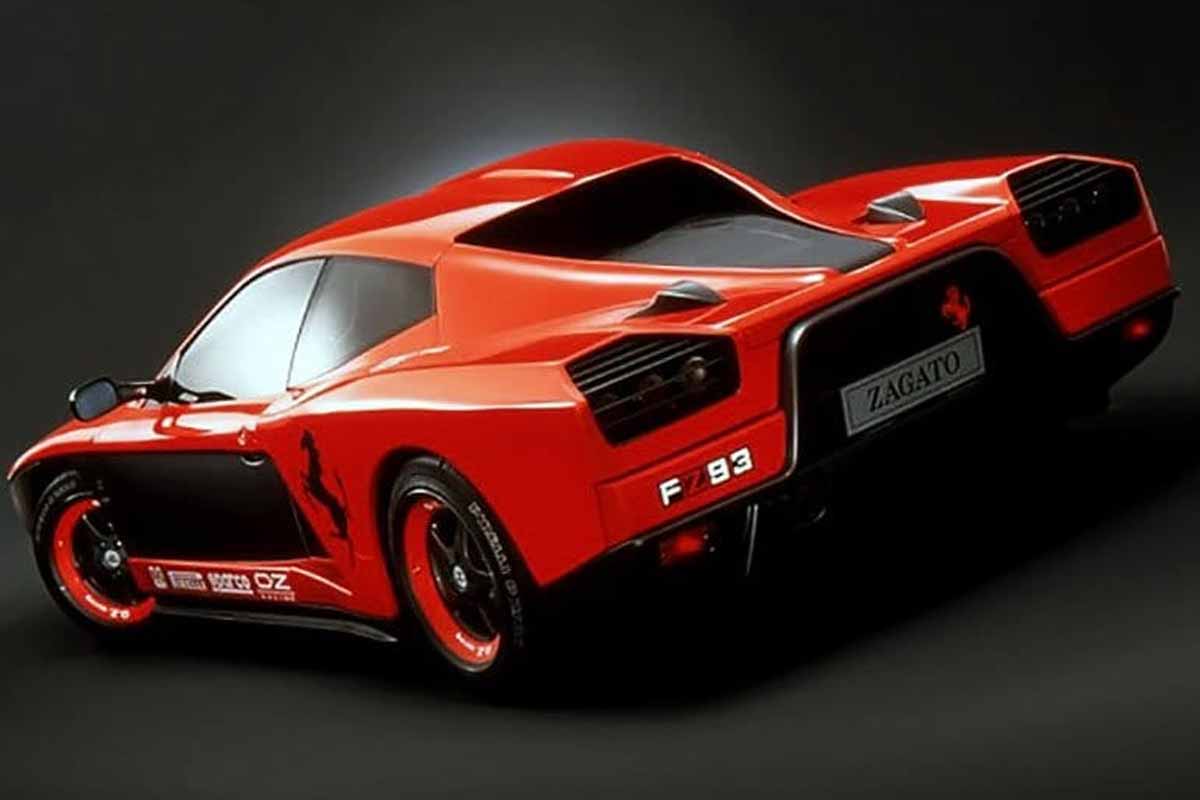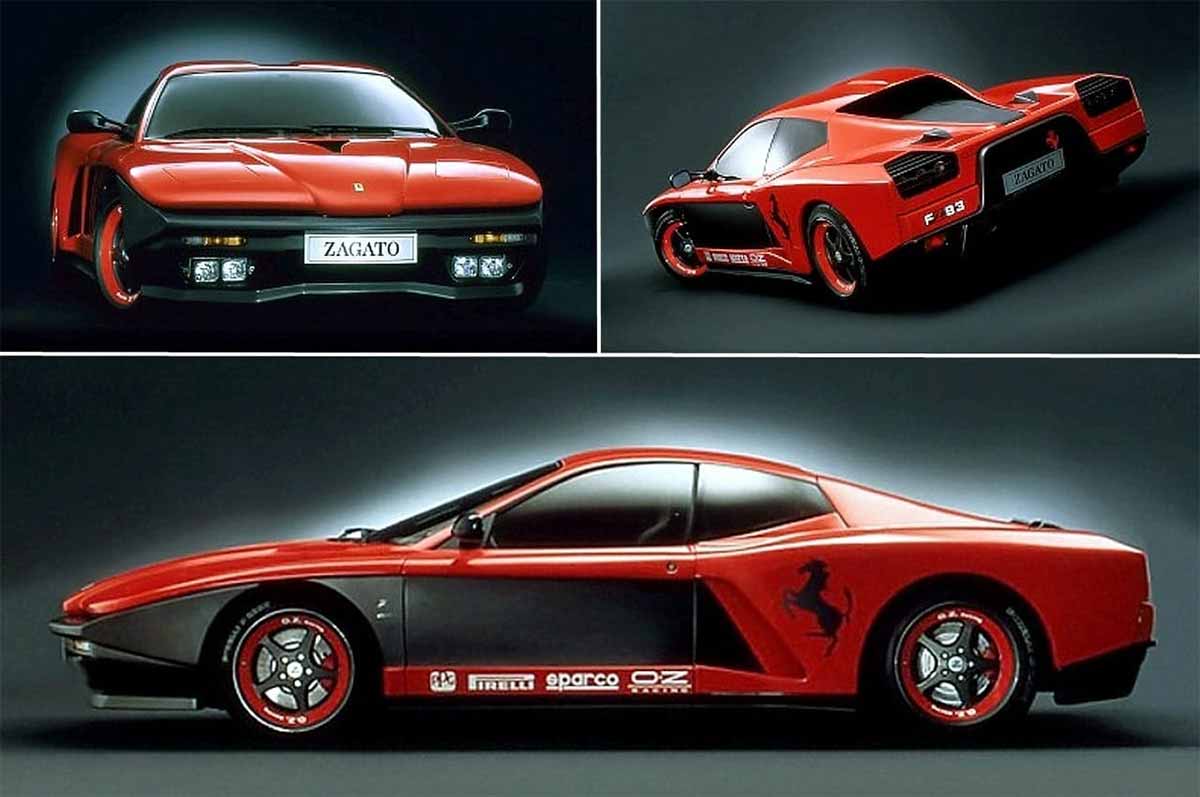
Zagato has rarely collaborated with Ferrariwhose coachbuilder of choice was Pininfarina. But in the early '90s, the two companies began working together, notably on a small series of 348 Zagato "Elaborazione" models. It was at this point that former Zagato design director Ercole Spada returned to the company, having previously worked for various manufacturers. At the time, he had just signed the 155 for Alfa Romeo. It was then decided to create a special model based on the 512 TR for the 1993 Geneva Motor Show.
Based on the Ferrari 512 TR
The 512 TR, introduced in 1992, was an improvement on the 1984 Testarossa, with improved aerodynamics, a more ergonomic interior and a 12-cylinder, 4.9-liter flat-bed engine whose power was increased to 428 hp. The 512 TR was based on a revised version of the original Testarossa's welded steel tubular chassis, offering increased rigidity of 13 %. To improve handling, the ride height was lowered, while the engine and gearbox were mounted lower in the chassis.
We all know that Zagato, with its aeronautical inspirations and avant-garde philosophy, can surprise in both good and bad ways: it's hit or miss, and that's the price to pay for a bold, iconoclastic approach. The FZ93, for "Formule Zagato 93", was one of Zagato's most talked-about models: it was to surprise and deeply divide the public at the time, with its stylistic choices very much in line with those of the Testarossa. Some found it reminiscent of the Corvette C4, or even the Honda NSX.
F1 and Aviation, two sources of inspiration

The all-carbon-fiber bodywork features a slightly plunging F1-style nose at the front, consisting of a raised central section with a prominent NACA duct. The nose slopes down to point sharply over a one-piece, boomerang-shaped bumper. This distinctive effect was later reproduced on models such as the Ferrari Enzo and Mercedes-Benz McLaren SLR. In keeping with the spirit of the '80s, retractable headlamps were located on either side of the nose.
From the fenders, a taut line separates the cockpit from the sides, while the Testarossa's characteristic shark gills give way to a double air intake reminiscent of an F1 pontoon. The dramatically curved rear wings were necessary to match the enormous size of the basic car, and were a direct inspiration for the Enzo of 2002.

As usual, Zagato equipped the FZ93 with the iconic double-bubble roof. The cockpit's tapered profile extended much further than that of the standard 512 TR, terminating in a rear structure of inverted NACA ducts that Spada integrated into the rear window. The rear diffuser was integrated into an inverted U-shaped central panel, on either side of which were taillights concealed behind black slatted fins.
Too much tuning?

The front bumper, flanks, door mirrors, side skirts, rear diffuser and inverted U-shaped rear bumper were painted graphite grey to contrast with the Rosso paintwork. An imposing black Cavallino Rampante was applied to each rear wing. This two-tone presentation, embellished with large prancing horses on the flanks, was frowned upon as a tuning artifact. They eventually disappeared in the final version, while the body was painted entirely in red.

The interior also changed dramatically, with aluminum fronts and the predominance of circular shapes for the rev counter and air vents, but with a presentation that was unflattering to the eye. The manually adjustable racing-style bucket seats were upholstered in grey Alcantara, matching the upper part of the dashboard and the door armrests.

Last but not least, Zagato has chosen to replace the standard Speedline wheels shod with Pirelli P Zero with a set of OZ Racing five-spoke wheels, customized and finished in two-tone graphite and red.
On paper, better performance than the 512 TR
The engine fitted to the FZ93 was an extensively reworked version of the original Testarossa unit. A dry-sump, all-alloy engine with 180° Flat 12 double overhead camshafts, the Tipo F113 featured revised cylinders and redesigned four-valve cylinder heads. Displacement remained unchanged at 4942 cm3, but maximum power rose to 428 bhp at 6750 rpm, with torque of 490 Nm at 5500 rpm. Transmission was via a five-speed manual gearbox with new ratios, a hydraulic double-disc clutch and a limited-slip differential.
A standard 512 TR weighed 1,473 kg, but due to its composite body and more basic interior, the FZ93 was estimated to weigh around 1,350 kg. Performance figures would have been slightly better than an unmodified example, with a top speed of around 320 km/h (vs. 313 km/h) and a 0-100 time of around 4.5 seconds (vs. 4.8 seconds).
Like most Zagato concepts of the modern era, the FZ93 received a mixed reception due to its unconventional design and atypical styling.
